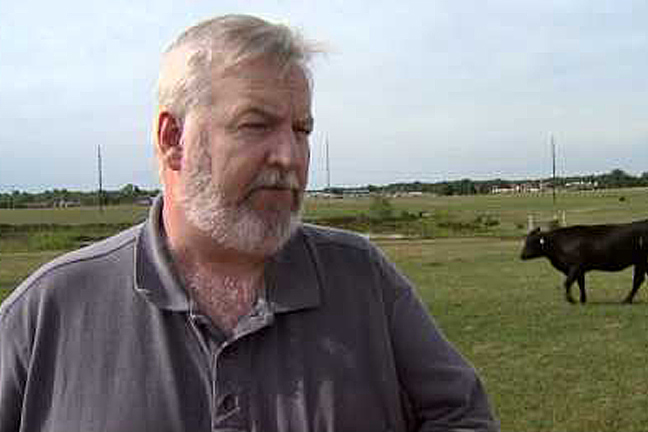
Beef Buzz News
Recent Corn Stocks Report has Big Impact on Cattle Prices, Derrell Peel Says
Wed, 03 Apr 2013 16:22:03 CDT

The feeder cattle market has had its ups and downs recently and Oklahoma State University Livestock Marketing Economist Derrell Peel says a price fall off about a month ago still has economists scratching their heads.
"Feeder cattle prices, particularly at the heavier weight cattle, the feedlot placement kind of cattle, over the last six to eight weeks have dropped significantly. It wasn't something that, at least, I expected to see. And I think it's become apparent recently that feedlots were sort of sitting on the sidelines because their margins had been so poor and they certainly couldn't afford what they were having to pay for feeder cattle. They found a way, largely in anticipation of waiting to see what this next corn crop was going to look like. They've been kind of sitting on the sidelines and letting those feeder cattle prices weaken.
"I think this last report with the bigger stocks in it, the grain stocks higher, and the reaction of the grain markets to fall in response to that may be the trigger, sort of, for the feedlots to get back in the game, if you will. I really sort of expect to see these feeder cattle markets recoup quite a bit of the weakness that has been there for the last several weeks as we go forward from here."
Peel says feedlots are now moving away from the sidelines, wading back into the markets, and trying to rebuild their inventories.
"I think we may see feedlot inventories rebuild a little bit, that's not to say they're going to go above year-ago levels. As of the last Cattle on Feed report, we had pulled feedlot inventories down to about seven percent below a year ago.
"The placements in February were very, very low. In fact, they were the lowest for the data serious we use now in terms of feedlots 1,000 head and larger going all the way back to the beginning of that. We have not seen February placements that low."
Peel says he thinks low placements are a timing issue. He said he believes feedlots which had been sitting out for much of February and March and not replacing animals as they were being marketed, will once again rejoin the market. He says that should strengthen feeder markets going forward.
"As we go forward from here, I think the long-term supply fundamentals that we've been talking about for a long time will become increasingly important. Slaughter will continue to fall. Even though we talk about feedlots rebuilding their inventories a little bit, the overall effect is that we're going to see tighter feed supplies, tighter feeder cattle supplies, and, so, all of those things I think will translate into reduced beef production that will continue to pressure prices up.
"There's two really key factors going forward: One is with smaller cattle slaughter, carcass weights become an important determinant of what total beef production will be and the other thing we've seen recently, just in the last couple of weeks, carcass weights have begun to come down, closer to last year's level, much like we expected. And, if that trend continues, then we won't see the kind of carcass weight impact that we had a year ago that offset much of the decrease in cattle slaughter.
"The other key, of course is beef demand. We haven't seen it recover yet. I think a lot of it is due to weather effects and I do think as we move into warmer weather and sort of get into that grilling season that they always talk about this time of year, we'll see the middle meat demand strengthen a little bit. That's certainly a key as we go forward in the coming weeks."
The Beef Buzz is a regular feature heard on radio stations around the region on the Radio Oklahoma Network- but is also a regular audio feature found on this website as well. Click on the LISTEN BAR below for today's show- and check out our archives for older Beef Buzz shows covering the gamut of the beef cattle industry today.
WebReadyTM Powered by WireReady® NSI
Beef News



















